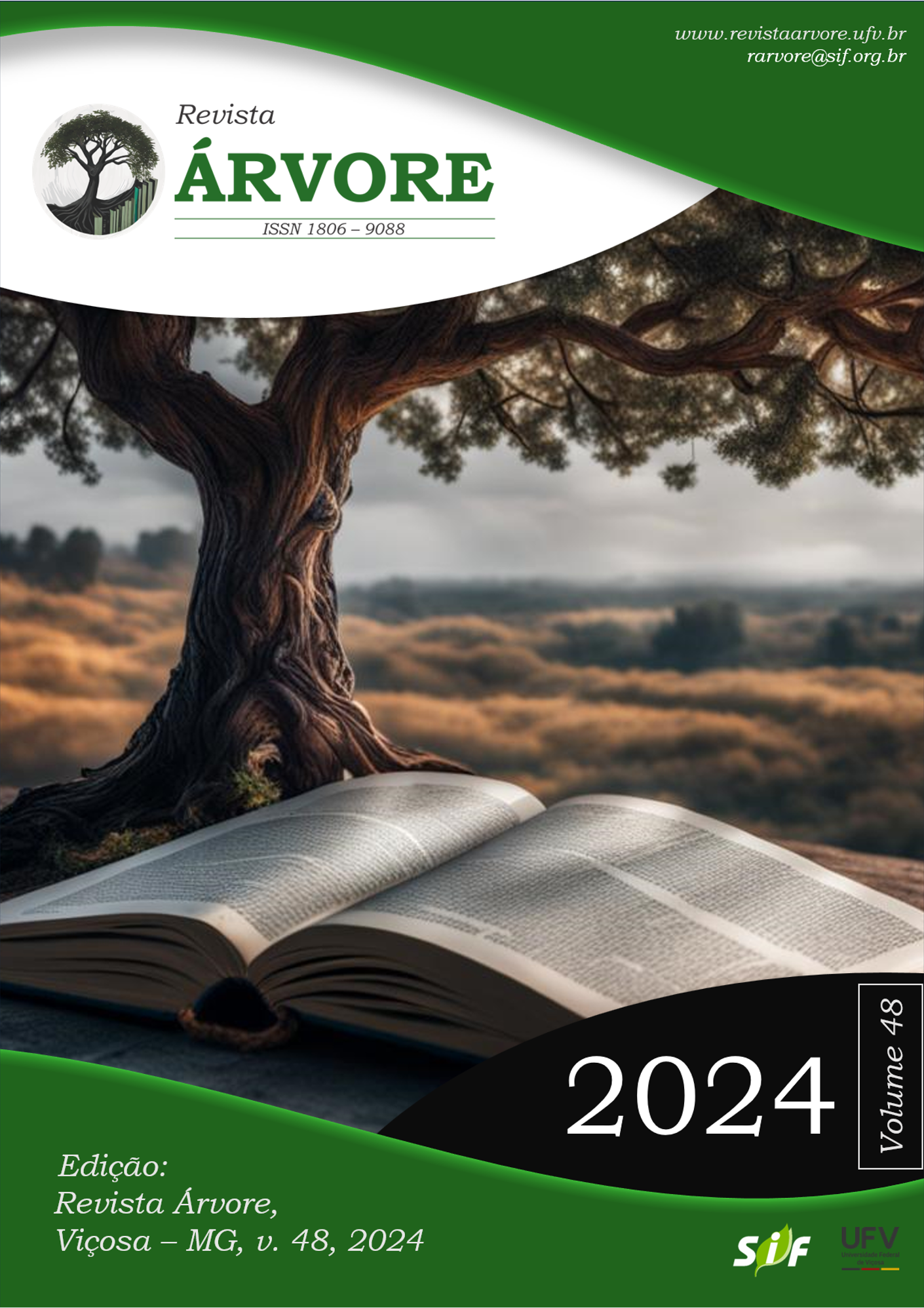Modeling aboveground carbon stock under the forest canopy influence
DOI:
https://doi.org/10.53661/1806-9088202448263778Keywords:
Remote sensing, Forest hydrology, Forest managementAbstract
The dominance, size, and sociological position of tree species are essential components of natural forest patterns, providing critical information for understandinh forest dynamics. These patterns can be influenced by a variety of factors. This study aimed to evaluate the effectiveness of using spectral, hydrological, and geographical variables to estimate aboveground carbon stock (AGC) across four canopy strata, defined by diametric percentiles, in a Brazilian Atlantic Forest remnant. Our methodology, which employed machine learning techniques (Random Forest - RF + Genetic Algorithm - GA) and Multiple Linear Regression (MLR) to model AGC, proved to be highly efficient, as evidenced by our results. We observed a wide range of AGC values, from 0.37 to 467.71 MgC.ha-1, with an average of 77.4 MgC.ha-1. Trees in the 30th, 60th, and 90th percentiles contributed, respectively, 97.32%, 87.74%, and 52.02% of the total AGC. Spectral and hydrological variables combined with basal area explain AGC stock. Our findings demonstrate the robustness of machine learning techniques and MLR methods in obtaining accurate carbon estimates and generating an optimized dataset. Trees within the 30th percentile represent a smaller portion of the total AGC, and their removal does not interfere with the relationship between AGC and spectral variables.
Keywords: Remote sensing; Forest hydrology; Forest management
Downloads
Published
How to Cite
Issue
Section
License
Copyright (c) 2024 Revista Árvore

This work is licensed under a Creative Commons Attribution 4.0 International License.
All authors agreed to submit the work to Revista Árvore and granted the exclusive license to publish the article. The authors affirm that it is an original work and has not been previously published elsewhere. The scientific content and opinions expressed in the article are the sole responsibility of the authors and reflect their opinions, not necessarily representing the opinions of the editorial board of Revista Árvore or of the Society of Forest Investigations (SIF).








